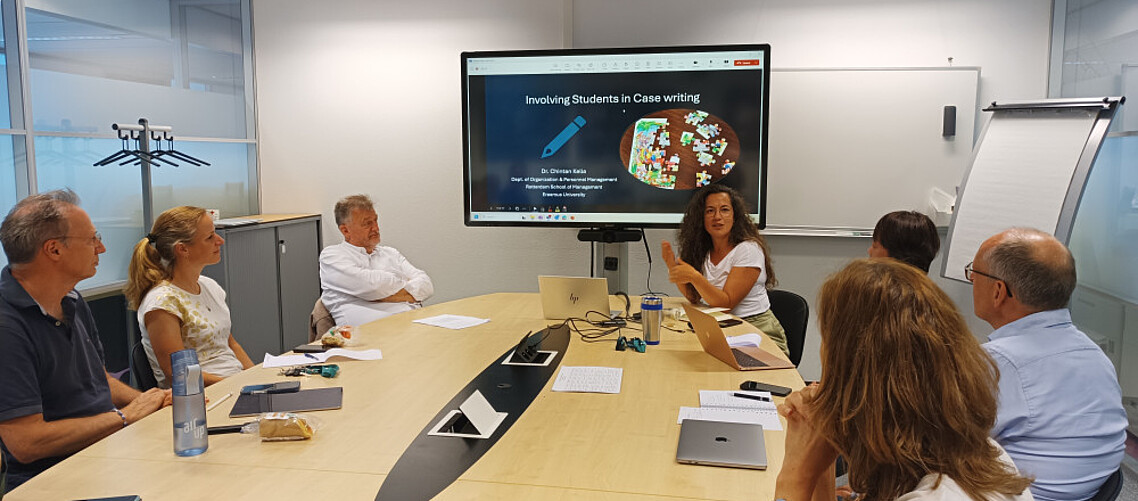Empowering students through case development
Dr Wim Hulsink opened the seminar by discussing his extensive experience in case teaching and involving students in case writing. Drawing from years of collaboration with the CDC, he described how cases co-authored by students have not only enhanced classroom engagement but have also been successfully published and adopted by fellow educators.
Hulsink emphasised that student-authored cases can stem from diverse academic touchpoints: MSc theses, CEMS group assignments, or elective course work. The cases are built around real-world companies including start-ups founded by students themselves, firms in their direct networks of family or friends, or suggestions from Wim himself.
Several cases, including AirTame, Candice Cake, and HousingAnywhere, have even generated noticeable royalties and citations, showcasing their impact beyond the classroom.
Educational and pedagogical benefits
Wim Hulsink highlighted that involving students in case writing provides them with opportunities to develop skill sets not typically assessed in the school curriculum, such as storytelling, interviewing, and editing. It also allows them to bring their own perspectives to the cases they write. Students are also encouraged to select their own topics, often resulting in them choosing a theme they deeply care about, such as blockchain, sustainability, or diversity.
Case writing as a cognitive puzzle
Dr Chintan Kella provided a complementary view by presenting case writing as a form of puzzle solving. His pedagogical approach frames case writing as a process that combines creativity, critical thinking, and metacognition. Students move from confusion to clarity, learning how to identify dilemmas, build narratives, and consider multiple stakeholder perspectives.
According to Kella, writing cases helps students apply theoretical concepts in practice, develop inquiry skills, and manage complex writing projects. His model treats case writing as an iterative process, assembling the right narrative elements and connecting them meaningfully, all while balancing structure and creative freedom.
Key discussion points
During the Q&A and discussion session, practical issues addressed included:
- Student motivation: Participants shared methods for preparing students, such as using discussion-based lectures to foster engagement or incorporating a company analysis throughout the course, which can later serve as a basis for a compelling case.
- Assessment challenges: The trade-off between grading and creativity was thoroughly discussed. Strict learning goals and grading rubrics can limit ambiguity and reduce the creative freedom needed in case writing.
- Use of AI: While tools like ChatGPT can assist students with the daunting task of case writing, they may also strip away individuality and originality, and raise copyright concerns.
Get involved
The CDC offers comprehensive support to faculty and teaching staff interested in transforming their research or professional experiences into impactful learning materials. If you have an interesting project and are looking for ways to maximize its impact through a teaching case, please contact the CDC. Our experienced case writers can support you brainstorm case ideas, design the classroom application, and guide you through the development process.
With over 15 years of expertise in case development, the CDC can help adapt your research or practical work for educational use, provide professional writing assistance, and facilitate publishing and promotion to broaden reach and increase impact. Getting the CDC involved early can not only ensure an efficient case development process, but it can also spark new ideas and improve your chances of acquiring external funding.
The seminar is part of the CDC quarterly seminars on Creating Memorable Cases. Join the RSM Case Community to stay updated on future seminars.
